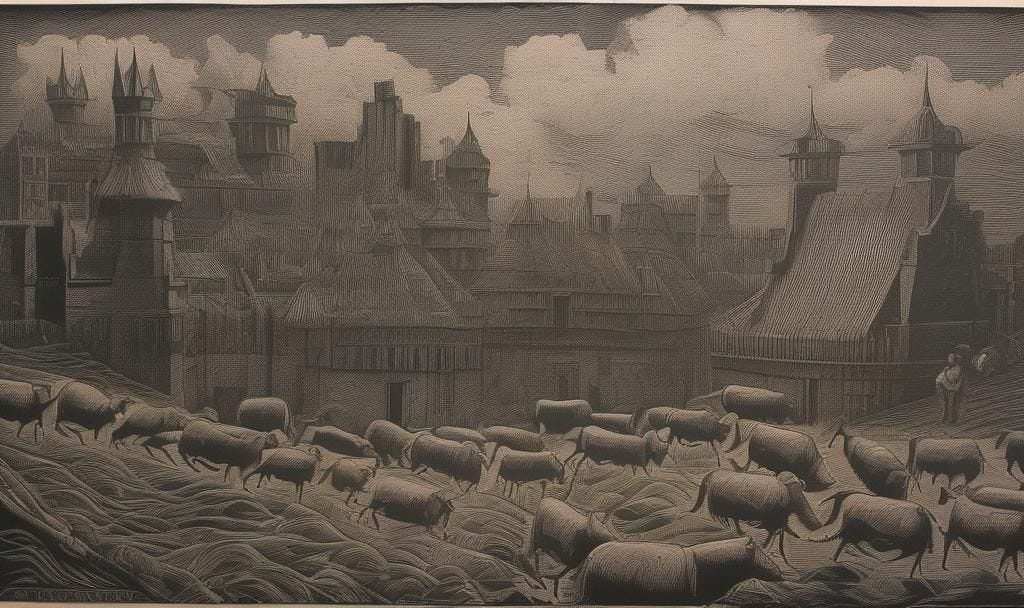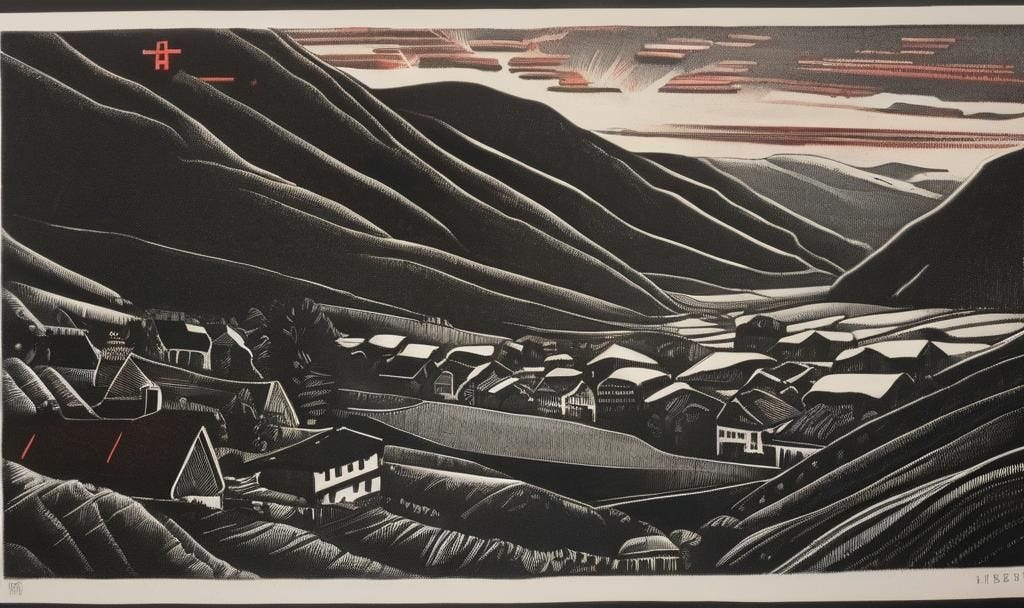As a continuation of my thoughts on Land is Not Commodity, I will be recounting the history of a special type of land categorization known as allodium or allodial land. Allodial land describes not the land itself but the obligations that pertain to the ownership of said land.
Origins of allodium and allodial land rights
The allodium (or alodial land) has a fascinating history that traces its origins in ancient times, through its peak in the early Middle Ages, to its eventual decline with the rise of feudalism in medieval Europe. Understanding its evolution gives insights into how land ownership and tenure evolved, especially in contrast to the later feudal system that defined much of European history.
Early Roman and Germanic Origins
The concept of allodium predates feudalism, with roots in the Germanic and Celtic tribes of early Europe, who had forms of land ownership that did not require feudal obligations. In pre-Roman Germany and among the early Germanic tribes, land was often owned freely by individuals and could be passed down or divided among family members without any obligations to a central ruler or lord. This kind of ownership was an expression of freedom and independence but also disunity from a state.
In Roman law, however, there was no direct equivalent to allodial land. After all, Roman law tended to recognize land ownership through systems that were tied to the state or imperial power (like the concept of dominium). However, the practice of private land ownership in Rome eventually influenced medieval European notions of landholding or land rights.
The Rise of the Allodium in Early Medieval Europe
Germanic Kingdoms and Early Feudalism
After the fall of the Western Roman Empire (476 CE), much of Europe came under the control of Germanic tribes such as the Franks, Visigoths, and Anglo-Saxons. These early medieval societies maintained a system of land ownership based on family or tribal control, where land was held freely and not subject to the obligations of a feudal lord.
In these early kingdoms, there were landholding arrangements that allowed freeholders to own land without the need to provide military service or other feudal duties to a lord. The term allodium likely derived from the Germanic idea of freely-held land—that is to say, landownership without any obligations to a lord—which was distinct from land granted under feudal service.
Allodial Land in Early Frankish and Anglo-Saxon Societies
Under the Franks (especially during the reign of Charlemagne), allodial land was common in the empire’s vast territories. In Gaul and what would become the Holy Roman Empire, the Germanic system of land tenure remained strong, and many noble families held land allodially.
Similarly, in Anglo-Saxon England, the concept of allodium was also present before the Norman Conquest of 1066. The Anglo-Saxons had a system where freeholders (called ceorls and thegns) could hold land outright, as long as they paid a rent or gave a tribute. They were not obliged to provide military service unless they were nobles.
The Rise of Feudalism and the Fall of Allodial Land Rights
Feudalism and the Transformation of Land Rights
The feudal system, which began to take shape in the 9th and 10th centuries, fundamentally changed land ownership across Europe. As kings and lords began to consolidate power and establish central authority, land became tied to military service, with the concept of fiefs—land granted by a lord in exchange for loyalty, military service, or other duties—taking over as the dominant form of landholding.
This transition from allodial to feudal landholding is one of the defining features of the feudal system. Under feudalism, land was no longer simply owned by the individual. Instead, land ownership became a hierarchical relationship between the monarch, the lord (or vassal), and the serf (or peasant).
Feudal obligations—such as the payment of rents, military service, and the loyalty of vassals to their lords—replaced the old, more independent allodial ownership. Even the most powerful lords and nobles no longer owned land outright (without obligations to someone who has authority over another), but rather held it as a fief from the monarch.
Royal Control and the Abandonment of Alod:
With the rise of centralized monarchies, monarchs often sought to reduce the power of local lords and nobility. One of the ways monarchs increased control was by taking away the allodial lands of the nobility and converting them into feudal fiefs that could be revoked or redistributed at the king’s discretion.
In regions where feudalism took hold, such as France, England, and the Holy Roman Empire, the allodial system gradually eroded. By the end of the 11th century, allodial landholding had become quite rare.
The Persistence of Alod in Switzerland and Scotland
In parts of what is now Switzerland, the concept of allodial land continued to survive long after the rise of feudalism in other regions. In some Swiss cantons, the Swiss peasant retained ownership of land in an allodial form, which was independent of feudal obligations to a lord.
Similarly, in the Scottish Highlands, there was a continuation of more tribal or clan-based land ownership that resembled the older forms of allodial landholding, where clans and their chiefs controlled land directly, without feudal obligations to a higher lord.
Alod in Modern Times
While the concept of alodial land largely disappeared during the medieval period, some remnants of it can still be found in modern land ownership laws, especially in systems of freehold property.
In modern legal terms, an allodial title can refer to land that is free of encumbrances or claims from superior authorities, although the historical sense of allodial land as entirely free from any feudal obligations is no longer widespread.
In the United States, the concept of allodial title is sometimes invoked in discussions about property rights, particularly in relation to the ownership of land without any obligations to a higher power (such as taxes or claims from a government). However, in most modern legal systems, land is still subject to taxation and other forms of government control, meaning true allodial ownership, as understood in medieval Europe, no longer exists in its original form.
Summary
The allodium or alodial land was a form of freehold land ownership in the early medieval period that was not subject to the obligations of the feudal system. It was owned outright by the holder, who did not owe military service, rents, or loyalty to a lord.
It existed in early Germanic, Frankish, and Anglo-Saxon societies and was the dominant form of land tenure before the rise of feudalism.
As feudalism spread throughout Europe from the 9th century onward, land tenure became tied to feudal obligations, and the concept of allodial land largely disappeared.
However, in certain regions like Switzerland and parts of Scotland, the idea of allodial land persisted for longer, and the legacy of freehold ownership can still be found in modern property law in various forms.






